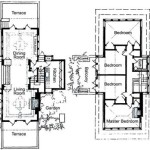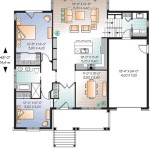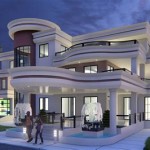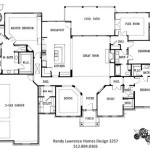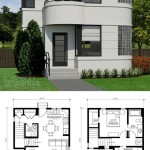Discover Your Dream Lakeside Haven: Explore House Plans for Lake George
Lake George, often lauded as the "Queen of American Lakes," presents an idyllic backdrop for a dream home. The allure of crystal-clear waters, majestic mountains, and a vibrant community draws individuals seeking tranquility and recreation. Constructing a lakeside residence requires careful consideration, with house plans tailored to the unique characteristics of the Lake George environment paramount to a successful and fulfilling living experience. This article explores key factors to consider when embarking on the journey to discover the perfect house plan for a Lake George property.
The selection of a suitable house plan extends far beyond mere aesthetics. It necessitates a comprehensive understanding of the local building codes, environmental regulations, and the inherent challenges and opportunities presented by the terrain. Ignoring these fundamental aspects can lead to costly revisions, delays, and ultimately, a residence that fails to fully integrate with its natural surroundings.
The geographical nuances of Lake George significantly impact house plan design. The shoreline varies from steep, rocky inclines to gentle, sandy beaches. Each topography demands a distinct architectural approach to ensure structural integrity, accessibility, and responsible land management. Furthermore, the lake's immediate proximity dictates incorporating features that maximize views while minimizing potential environmental impact.
The climate of Upstate New York contributes another layer of complexity. Harsh winters with heavy snowfall and fluctuating temperatures require robust construction materials and efficient heating systems. Conversely, warm summers necessitate designs that promote natural ventilation and utilize energy-efficient cooling solutions. Therefore, a house plan specifically adapted to the region's seasonal variations is essential for long-term comfort and sustainability.
Navigating the local regulatory landscape is crucial. Lake George is subject to stringent environmental protection measures aimed at preserving the lake's pristine quality. Before commencing any construction project, it is imperative to secure the necessary permits from relevant authorities, including the Lake George Park Commission and local town planning boards. Familiarity with these regulations ensures compliance and avoids potential legal ramifications.
Understanding Lake George's Unique Environmental Considerations
The preservation of Lake George's water quality is of paramount importance. House plans must incorporate strategies to minimize stormwater runoff and prevent erosion. This often involves employing permeable paving materials, implementing effective drainage systems, and preserving existing vegetation. Furthermore, septic systems must be designed and maintained to prevent nutrient pollution, which can contribute to algal blooms and degrade water quality.
The steep slopes prevalent along the shoreline necessitate specialized construction techniques to prevent landslides and maintain soil stability. Retaining walls, terracing, and careful excavation are often required to create level building platforms. It is crucial to engage geotechnical engineers to assess soil conditions and design appropriate foundation systems. Failure to address these geotechnical concerns can compromise the structural integrity of the house and pose a threat to the surrounding environment. Consider incorporating native plants into the landscaping plan. Native species are adapted to the local climate and soil conditions, requiring less water and fertilizer than non-native plants. They also provide habitat for local wildlife, contributing to the overall biodiversity of the area.
Light pollution is another environmental concern in the Lake George region. Excessive artificial light can disrupt nocturnal wildlife and diminish the clarity of the night sky. House plans should incorporate shielded outdoor lighting fixtures that direct light downwards and minimize light trespass. Motion-sensor lights can also be used to reduce energy consumption and minimize unnecessary illumination. The goal is to create a well-lit environment that is both safe and environmentally responsible.
Maximizing Views and Embracing Lakeside Living
One of the primary reasons for choosing a lakeside property is the opportunity to enjoy panoramic views. House plans should be designed to maximize these vistas through strategically placed windows, balconies, and decks. Careful consideration should be given to the orientation of the house to capture the best sun angles and avoid glare. Large windows can create a sense of openness and connection with the outdoors, while strategically positioned decks and patios provide ideal spaces for outdoor entertaining and relaxation.
Designing for lakeside living also involves creating seamless transitions between indoor and outdoor spaces. Features such as sliding glass doors, screened porches, and outdoor kitchens can extend the living area and allow residents to fully embrace the natural surroundings. These transitional spaces provide opportunities to enjoy the fresh air, sunshine, and the sights and sounds of the lake. Consider incorporating a boat dock or waterfront access point into the property design to facilitate recreational activities such as boating, swimming, and fishing.
Natural light is a valuable asset in any house design, but it is particularly important in a lakeside setting. Large windows and skylights can flood the interior with natural light, reducing the need for artificial lighting and creating a brighter and more inviting atmosphere. However, it is important to balance natural light with energy efficiency. Low-E glass can help to reduce heat gain and prevent fading of interior furnishings. Strategically placed overhangs and awnings can also provide shade and minimize glare.
Addressing Practical Considerations: Accessibility and Functionality
Accessibility is a crucial aspect of house plan design, particularly for individuals with mobility limitations or those planning for future aging in place. Incorporating features such as ramps, elevators, and wider doorways can make the house more accessible and comfortable for everyone. Universal design principles should be applied throughout the house to ensure that spaces are usable by people of all ages and abilities. This may involve features such as lever handles, roll-under sinks, and adjustable-height countertops.
Functionality is another important consideration. House plans should be designed to meet the specific needs and lifestyles of the occupants. This involves carefully considering the layout of the rooms, the size of the spaces, and the storage requirements. A well-designed house will provide ample space for living, working, and entertaining. It will also be easy to maintain and clean. Consider incorporating features such as mudrooms, laundry rooms, and home offices to enhance the functionality of the house.
Storage is often overlooked in house plan design, but it is essential for keeping the house organized and clutter-free. Ample storage space should be provided throughout the house, including closets, cabinets, and shelving. Consider incorporating built-in storage solutions to maximize space and create a more streamlined look. A well-organized house will be more enjoyable to live in and easier to maintain. Think about seasonal storage needs, such as storing winter gear in the summer and vice versa.
The selection of materials plays a critical role in the durability and longevity of a lakeside residence. Materials that are resistant to moisture, mold, and insects are essential. Pressure-treated lumber, composite decking, and durable siding materials are well-suited for the Lake George environment. Metal roofing is another excellent choice, as it is resistant to fire, wind, and snow. Furthermore, energy-efficient windows and doors can help to reduce energy consumption and improve the overall comfort of the house.
Beyond the main house, consider the design of ancillary structures such as garages, boathouses, and sheds. These structures should be designed to complement the style of the main house and enhance the overall aesthetic appeal of the property. It is also important to ensure that these structures comply with local building codes and environmental regulations. A well-designed property will seamlessly integrate the main house with the surrounding landscape and create a cohesive and harmonious living environment.
Ultimately, discovering the dream lakeside haven on Lake George requires a meticulous approach to house plan selection. By carefully considering the environmental factors, maximizing views, and addressing practical needs, individuals can create a residence that is both beautiful and functional, a true reflection of the unique beauty and character of this exceptional location. Engaging with local architects and builders familiar with the Lake George region is highly recommended to navigate the complexities of construction and ensure a successful project outcome.

The Ultimate Guide To Designing Your Dream Lake House Inspired By Tahoe Edward George

The Ultimate Guide To Designing Your Dream Lake House Inspired By Tahoe Edward George

The Ultimate Guide To Designing Your Dream Lake House Inspired By Tahoe Edward George

Lake George Vacation Als House And Cottage Airbnb

The Ultimate Guide To Designing Your Dream Lake House Inspired By Tahoe Edward George

The Ultimate Guide To Designing Your Dream Lake House Inspired By Tahoe Edward George

Splash Into Fun Lake George Getaway Sleeps 12 Houses For In Fremont Indiana United States Airbnb

The Ultimate Guide To Designing Your Dream Lake House Inspired By Tahoe Edward George

Your Dream Lakefront Fully Loaded Escape Awaits Melrose Vrbo

Lake George Ny Bolton Landing Waterfront With Dock Private Adirondack Home Warren County Vrbo
Related Posts


